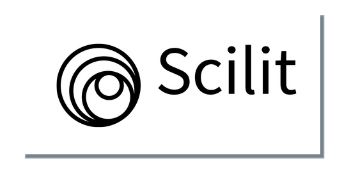Correllation of History of Chemotherapy and Absolute Neutrophyl Count to Antimannan IgM IgG in Lung Cancer Patient with Candida spp Colonization
DOI:
https://doi.org/10.11594/jk-risk.01.2.3Keywords:
Antimannan IgM and IgG; candidiasis; lung cancerAbstract
Background: The diagnosis Candidiasis spp in patients with lung Cancer is difficult. It is related to immunocompromised status. Antimannan IgM and IgG biomarkers are used to diagnose candidiasis. The aim of this study is to determine the correlation between chemotherapy status, absolute neutrophyl count to antimannan IgM and IgG.
Methods: The study design was a cross-sectional correlative analytic which included 37 patients in inpatient ward of Dr. Saiful Anwar Hospital Malang. The inclusion criteria patients aged >18 years with lung cancer who had established anatomical pathology, both non-small cell lung cancer and small cell lung cancer, and on sputum culture examination Candida spp grew with or without the growth of colonies of fungal species nor bacterial colonies. Exclusion criteria included lung cancer patients with HIV infection and autoimmune disease. Of the 37 patients who had received chemotherapy and had not received chemotherapy. The absolute neutrophil count and IgM and IgG antimannan were examined. Data chemotherapy status, absolute neutrophil count were analyzed in relation to IgM and IgG antimannan antibodies.
Results: This study showed that there were not correlation between chemotherapy status with antimannan IgM (p=0.585; r=0.089) nor IgG (p=0.124; r=0.245). However, there was a positive, moderate correlation between absolute neutrophil count and antimannan IgM (p=0,042; r=0,362), but there is no correlation between absolute neutrophil count and antimannan IgG (p=0,094;r=0,277).
Conclusion: There is positive moderate correlation between IgM antimannan with absolute neutropil count but no correlation with IgG antimannan. There is no correlation between IgM and IgG antimannan with chemotherapy status.
Downloads
References
CDC. Candidiasis [Internet]. CDC. 2020 [cited 2021 Dec 14]. Available from: https://www.cdc.gov/fungal/diseases/candidiasis/index.html
Laroumagne S, Lepage B, Hermant C, et al. Bronchial colonisation in patients with lung cancer: a prospective study. Eur Respir J. 2013;42(1):220-229. doi:10.1183/09031936.00062212
Marchetti O, Lamoth F, Mikulska M, et al. ECIL recommendations for the use of biological markers for the diagnosis of invasive fungal diseases in leukemic patients and hematopoietic SCT recipients. Bone Marrow Transplant. 2012;47(6):846-854. doi:10.1038/bmt.2011.178
Oizumi K. Respiratory infectious complications in patients with lung cancer. Japanese J Thorac Dis. 1989;27(3):286–8.
Pappas PG, Lionakis MS, Arendrup MC, et al. Invasive candidiasis. Nat Rev Dis Prim [Internet]. 2018;4(May):1–20. Available from: http://dx.doi.org/10.1038/nrdp.2018.26
Lecot P, Sarabi M, Pereira AM, et al. Neutrophil Heterogeneity in Cancer: From Biology to Therapies. Front Immunol. 2019;10:2155. Published 2019 Sep 20. doi:10.3389/fimmu.2019.02155
Crawford J, Dale DC, Lyman GH. Chemotherapy-induced neutropenia: risks, consequences, and new directions for its management [published correction appears in Cancer. 2004 May 1;100(9):1993-4]. Cancer. 2004;100(2):228-237. doi:10.1002/cncr.11882.
Waidhauser J, Schuh A, Trepel M, et al. Chemotherapy markedly reduces B cells but not T cells and NK cells in patients with cancer. Cancer Immunol Immunother. 2020;69(1):147-157. doi:10.1007/s00262-019-02449-y
Mikulska M, Calandra T. PD. The use of mannan antigen and anti-mannan antibodies in the diagnosis of invasive candidiasis. Crit care [Internet]. 2010;14:5. Available from: http://www.embase.com/search/results?subaction=viewrecord&from=export&id=L70805260%0Ahttp://dx.doi.org/10.1111/j.1439-0507.2012.02204.x%0Ahttp://sfx.library.uu.nl/utrecht?sid=EMBASE&issn=09337407&id=doi:10.1111%2Fj.1439-0507.2012.02204.x&atitle=The+use+of
Mederos N, Friedlaender A, Peters S, et al. Gender-specific aspects of epidemiology, molecular genetics and outcome: lung cancer. ESMO Open. 2020;5(Suppl 4):e000796. doi:10.1136/esmoopen-2020-000796
Shi J, Li D, Liang D, et al. Epidemiology and prognosis in young lung cancer patients aged under 45 years old in northern China. Sci Rep [Internet]. 2021;11(1):1–11. Available from: https://doi.org/10.1038/s41598-021-86203-4
Li D, Xia R, Zhang Q, et al. Evaluation of candidemia in epidemiology and risk factors among cancer patients in a cancer center of China: an 8-year case-control study. BMC Infect Dis. 2017;17(1):536. Published 2017 Aug 3. doi:10.1186/s12879-017-2636-x
Ayuk AC, Ekop E, Ozoya O, et al. Prevalence and predictors of pulmonary fungal infections in patients with acute leukemia and aggressive lymphomas: Implications for cancer care in developing countries. J Pan African Thorac Soc. 2021;2(3):154–60.
Poeran. 乳鼠心肌提取 HHS Public Access. Physiol Behav. 2017;176(12):139–48.
Moore DC. Drug-Induced Neutropenia: A Focus on Rituximab-Induced Late-Onset Neutropenia. P T. 2016;41(12):765-768.
Downloads
Published
Issue
Section
License
Authors who publish with this journal agree to the following terms:
- Authors retain copyright and grant the journal the right of first publication with the work simultaneously licensed under a Creative Commons Attribution License that allows others to share the work with an acknowledgement of the work's authorship and initial publication in this journal.
- Authors can enter into separate, additional contractual arrangements for the non-exclusive distribution of the journal's published version of the work (e.g., post it to an institutional repository or publish it in a book), with an acknowledgement of its initial publication in this journal.
- Authors are permitted and encouraged to post their work online (e.g., in institutional repositories or on their website) before and during the submission process, as it can lead to productive exchanges and earlier and greater citation of published work (See The Effect of Open Access).
















